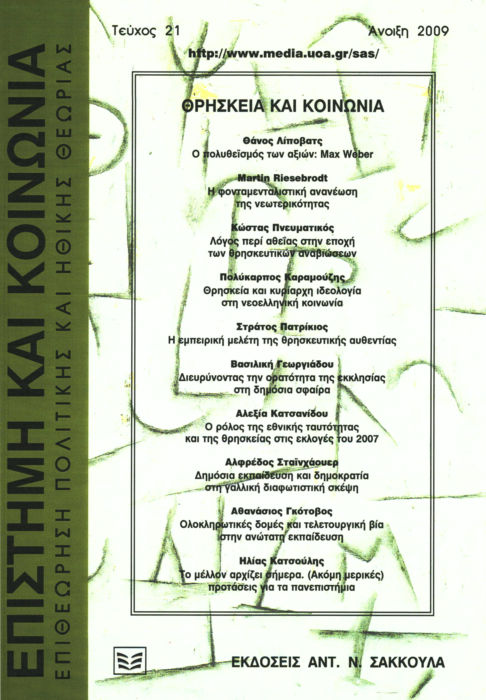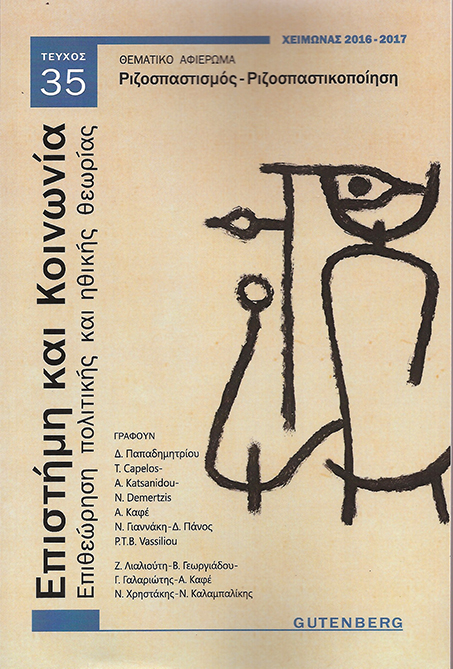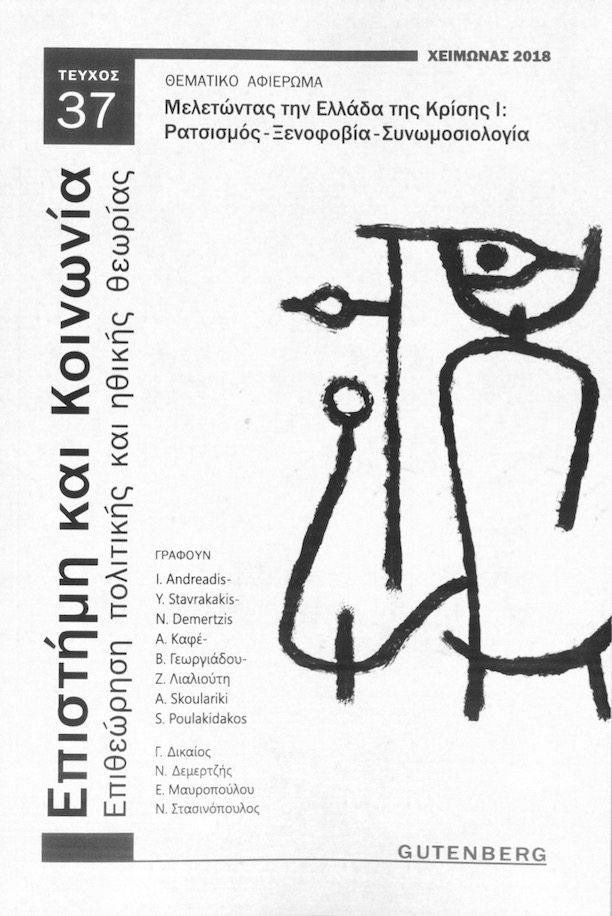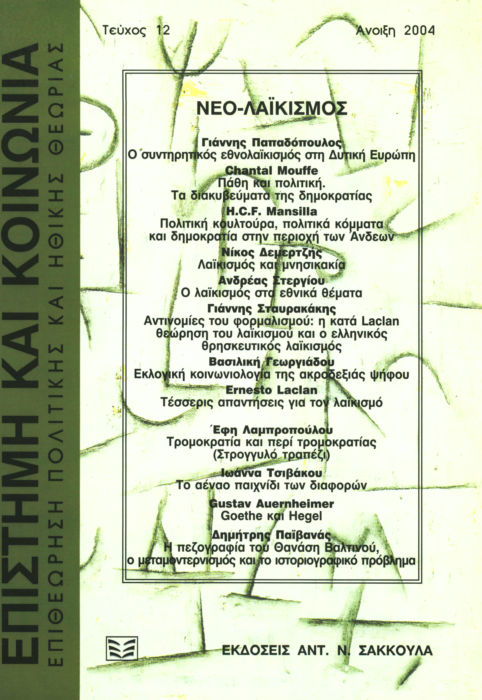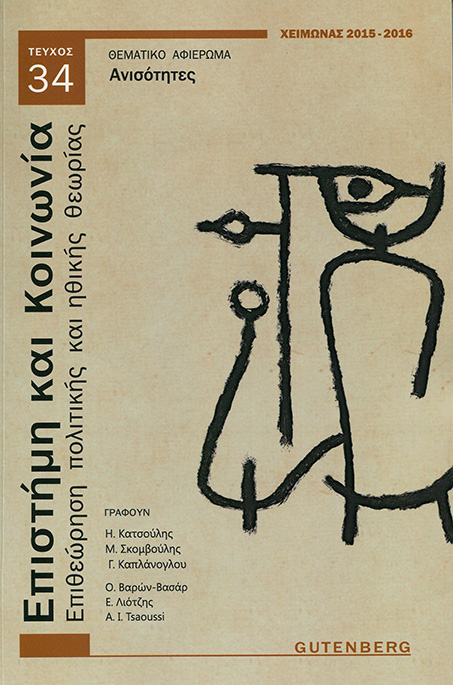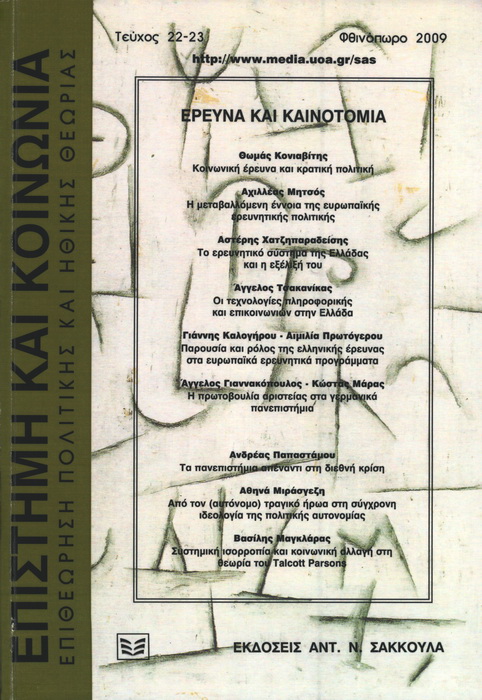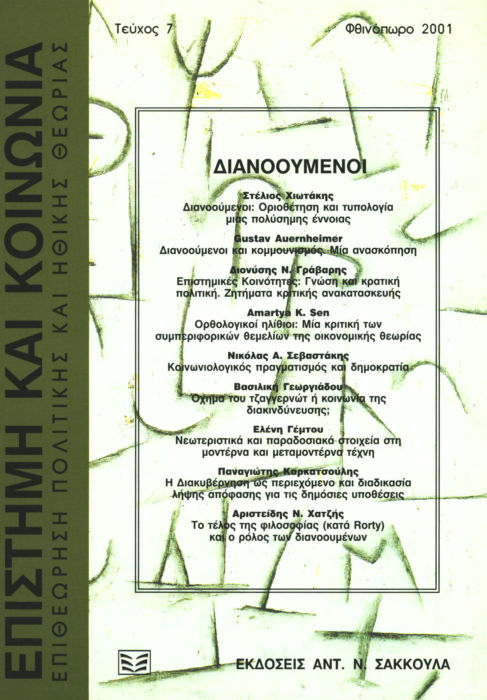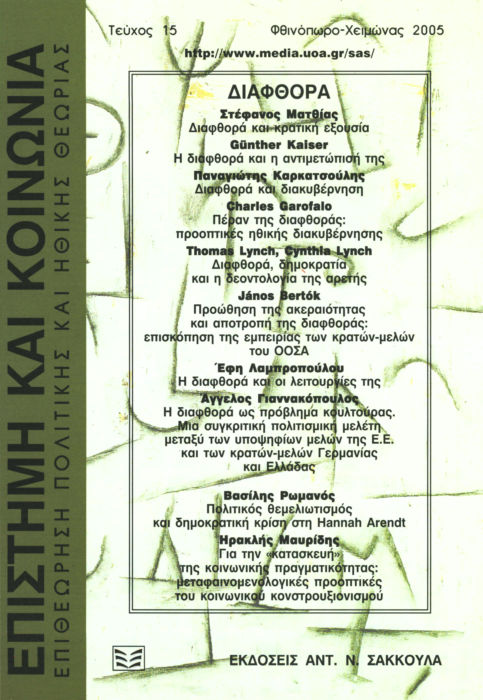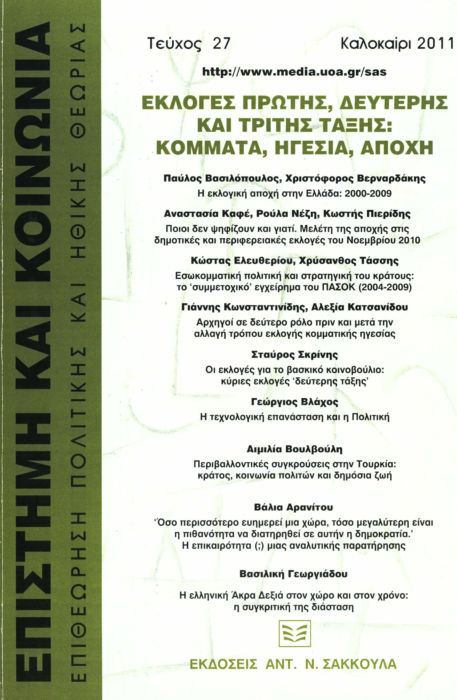Expanding the visibility of the church in the public sphere: the relationship between the orthodox church and Greek society during the era of the Archbishop Christodoulos
Abstract
The Greek Orthodox Church, as the Church of the ‘prevailing religion’ of Greece, has all the typical characteristics of a ‘public church’. With the advent of the Archbishop Christodoulos, in addition to being ‘public’, the Orthodox Church also became a ‘church with publicity’: Like other religions and churches during late modernity, the Greek Orthodox Church and its head gained more presence in the mass media, adopting the language and the technology of the media; finally, they were ‘subsumed’ under the logic of the media. Being based upon empirical data and analysis, we show that the Orthodox Church under the leadership of Christodoulos lost in social acceptance as well as in people with regularly religious practice. Additionally, the Orthodox Church could not stop its waning popularity among Greek youth despite the Archbishop’s continuous efforts to attract them into the Church.
Under Christodoulos, the Orthodox Church gained more in visibility and publicity; however, this gain was not followed by real spiritual influence over society. The phenomenon of a diffuse and loose religiosity, which characterize the relationship between the Orthodox Church and Greek society after the regime change in 1974, was strengthened even further in the decade of Archbishop Christodoulos (1998-2008).
Article Details
- How to Cite
-
Γεωργιάδου Β. (2015). Expanding the visibility of the church in the public sphere: the relationship between the orthodox church and Greek society during the era of the Archbishop Christodoulos. Science and Society: Journal of Political and Moral Theory, 21, 129–156. https://doi.org/10.12681/sas.455
- Section
- Articles

This work is licensed under a Creative Commons Attribution-NonCommercial-ShareAlike 4.0 International License.
Authors who publish with this journal agree to the following terms:- Authors retain copyright and grant the journal right of first publication with the work simultaneously licensed under a Creative Commons Attribution-NonCommercial-ShareAlike License that allows others to share the work, not for commercial purposes, with an acknowledgement of the work's authorship and initial publication in this journal. If you remix, transform, or build upon the material, you must distribute your contributions under the same license as the original.
- Authors are able to enter into separate, additional contractual arrangements for the non-exclusive distribution of the journal's published version of the work (e.g., post it to an institutional repository or publish it in a book), with an acknowledgement of its initial publication in this journal.
- Authors are permitted and encouraged to post their work online (e.g., in institutional repositories or on their website) prior to and during the submission process, as it can lead to productive exchanges, as well as earlier and greater citation of published work (See The Effect of Open Access).

